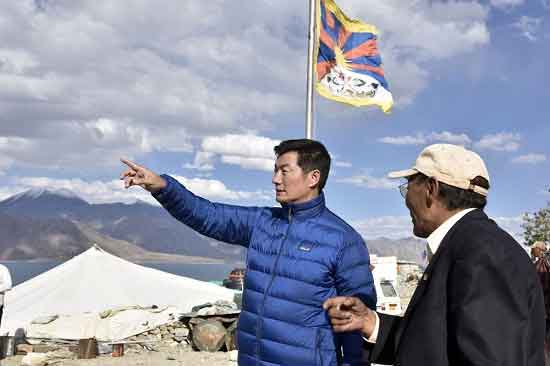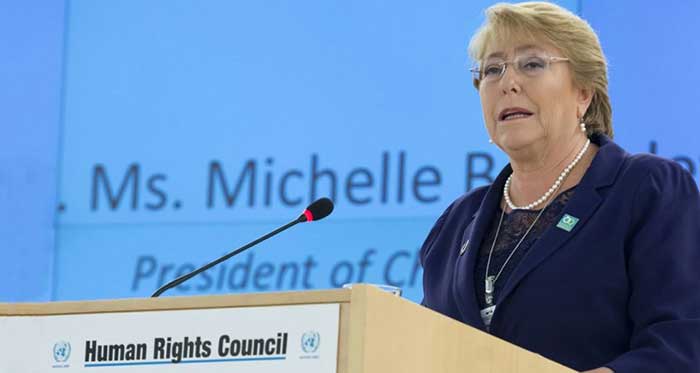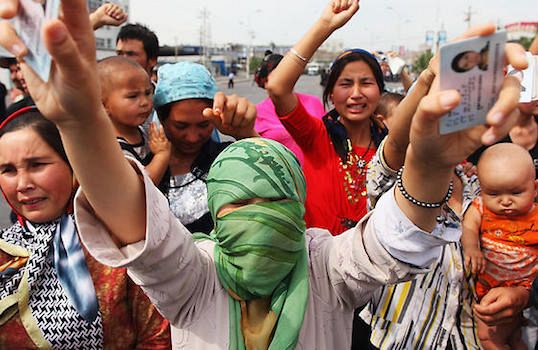
Left-inclined people in India are usually left in a twilight between belief and scepticism when faced with conflicting reports on affairs in Tibet and Xin Jiyang from Western and Chinese sources.
Western sources dwell on massive social and cultural oppression attempting to recast by force the native identities of the peoples of these two regions.But Chinese sources trot out impressive-sounding figures on development of those regions.Recently important African politicians were taken on a conducted tour of Xin Jiyang,and reportedly they expressed admiration for the fantastic progress by the peoples of these regions under tutelage of CPC.
Some years ago the ‘Frontline’ magazine also reported fact-checking visits by Indian journalists to Tibet and according to the reports published in the magazine the widespread news on suppression of Tibetan cultural identity were also a lot of poppycock.It must also be pointed out in this connection that during that particular period there had been a remarkable relaxation of restrictions in place allowing not only visits by foreigners but also attempts to build bridges with the Tibetan leaders in exile.But the experiment ended with Deng Xiao Ping ruling out any sort of autonomy for Tibet and insisting that the Dalai Lama should reside in and work from Beijing! Yet the picturesque images of cultural rape of Xin Jiyang in Western media like banning beards,namaj and Roja,and the Koran to boot,appear too thickly laid on paint.
China is actually deeply concerned about foreign interference in its national security in these regions,which cannot be dismissed as baseless.Its memory of such interference dates back to the nineteenth century when British imperialism used Tibet and Central Asia as cockpits to stage their covert conflict with Russian imperialism with scant regard for Chinese claims of suzerainty over Tibet.
But that is not acceptable as sufficient reason to support wholesale disinfection of regional cultures of any element that poses a challenge to unifying,homogenizing thrust of modern Chinese culture.This sense of cultural superiority based on material parameters mutilates against the self-respect of minorities.But while it is true that for nearly three centuries China acted as a Suzerain power in Tibet,there had also been times in the past when Tibet had prevailed against China and indeed had once occupied Beijing.Tibetans may not feel like being clients of a superior power,however mighty and glorious it is made out to be.
The main bone of contention is of course the different religious heritages of the two regions.Tibet adhered to a form or type of Buddhism different from that which had marked Chinese Buddhism. And Xin Jiyang had an Islamic past which CPC finds disturbing.But any attempt to surgically eliminate those inheritances is just as impractical as any attempt to erase all traces of a broadly Hindu heritage from different regions of India will be bound to be infructuous.(This does not mean support for many unlovely and inhuman aspects.)The challenge is to adopt a vibrant modern culture without obliterating native cultural heritage.Secondly the change from a religious to a secular frame of mind is a momentous episode full of drama,and which may not be grafted at will on some culture without a spontaneous social stir.
This brings us to the vexed question of cultural revolution.Revolutionary leaders are vexed with the strong roots of outdated and reactionary traditions in the culture of vast numbers of the masses in their country,and they have often taken drastic steps to uproot them root and branch and replace them with new ideas,attitudes and values.Mao Ze-Dong introduced some variety by tasking the youth of the country with the hatchet job.But in the end results do not appear to have been any more fruitful.People forget Mustafa Kamal had attempted something similar in Turkey,but after a hundred years it has come unstuck and the country is back to square one.
Actually the system and signs of culture are imbibed through a thousand diverse practices,multiple daily exposure to strongly held beliefs and collective cultivation of values.It gives a certain colour even to his emotions and tastes and reaches out to unconscious regions of the mind.It is not possible to erase the lot by compulsion and threats.Even if some force succeeds in obliterating all such traces that does not automatically ensure the success of a new system.
Under incessant pressure from a newly imposed set of beliefs,practices and values,an individual may perform like a zombie or a parrot,but will not himself derive any satisfaction from it.He may even feel a singular lack of depth in his new habits of mind.The release of energy expected from cultural transformation will simply not be there.Worse,in his eagerness to prove his commitment he may engage in excesses that do more damage than good.This is far from the creative exuberance a new sprouting of cultural life usually stimulates.
This is not to brush aside the imperative need for dynamic cultural change,but rather affirm caution and circumspection in bringing the process of transformation.An immediate radical change in all is simply a pie in the sky.One can at best motivate a section of society to pioneer the change and wait as the others are persuaded and moved in the new direction.It is likely that the younger generation will heed the call sooner and more eagerly than older members of society,but it will be foolish to drive a wedge between them.Some may remain stubbornly wedded to the old culture.But if they are a minority,there will be no need to suppress them.
Besides contradictions must be allowed to be played out in various spheres of culture rather than summarily
and artificially accelerated by diktat.An abstract formula of contradiction applied in total oblivion of the concrete, grounded nature of the culture in question will destroy but scarcely regenerate.
It is here that the examples of Tibet and Xin Jiyang appear unsatisfactory, even if one concedes material improvement in conditions of life.In their native environments the indigenous people might not be able to draw the same kind of mental vitality from a replication of what works in Beijing and Shanghai.So far there has not been any independent, unforced,positive appreciation of the spontaneity and vitality of the new culture imposed on these regions by impartial observers,even if we dismiss the exaggerated lurid image of these regions as vast camps of slave-labour.Military strategic necessity as understood by CPC seems to be the motive force behind whatever changes, fundamental or superficial, have taken place there.
Hiren Gohain is a literary critic, and social scientist















































